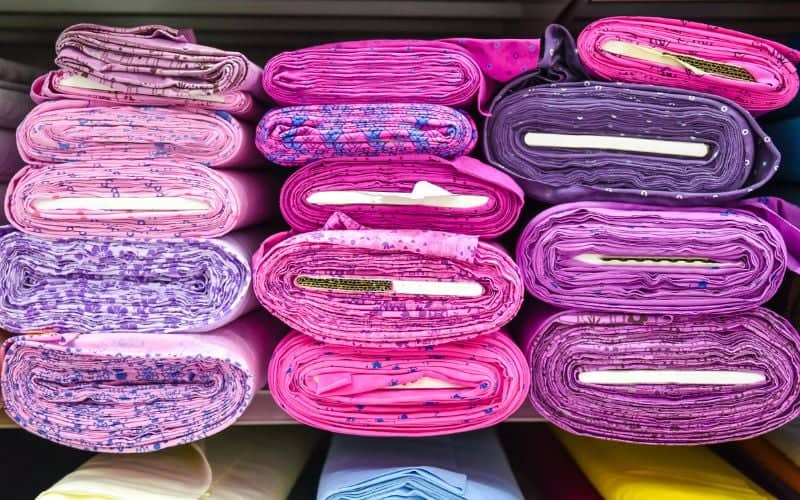Shein, a fast-fashion brand, has taken the world by storm with its unbelievably low prices on trendy clothing and accessories.
Many people often wonder how the company manages to sell their products at such affordable rates without compromising on style.
There are several factors that contribute to Shein’s low prices, and understanding these factors can provide valuable insight into the world of fast fashion.

One of the key reasons behind Shein’s affordability is its business model, which relies heavily on outsourcing production to countries with lower labor costs.
This allows the company to save on expenses, which directly translates to cheaper prices for consumers.
Additionally, Shein’s efficient production and marketing strategies have helped the brand establish itself as a dominant player in the fast-fashion industry.
Key Takeaways
- Shein’s unique business model and outsourcing practices contribute to its low prices.
- Efficient production and marketing strategies have helped the brand thrive in the fast-fashion industry.
- The company’s trade-offs between affordability and factors like labor ethics and environmental implications are important considerations for consumers.
Contents
The Shein Phenomenon
Shein, an online-only fashion retailer, is now one of the largest e-commerce platforms in the industry.
The brand has gained massive popularity with its highly affordable prices, especially among Gen Z customers and social media influencers.
In recent years, Shein hauls have become a significant trend on platforms like YouTube and TikTok, showcasing the vast array of trendy items on the website.
One contributing factor to Shein’s success is its effective use of social media marketing and collaborations with influencers.
The company can attract a wide range of customers who often share their experiences and promote the brand through their channels by providing fashion-forward pieces at low prices.
This has created a snowball effect as more people discover and become loyal online retailer customers.
Shein’s website also plays a crucial role in brand recognition and sales.
The platform is user-friendly and intuitive, making it easy for shoppers to browse through the extensive collection of products.
With constant updates, new arrivals, and promotional events, customers are frequently enticed to revisit the site and make additional purchases.
While Shein has experienced rapid growth and amassed a significant following, its reputation comes with valid concerns regarding the brand’s ethical practices and the true cost of cheap fashion.
Consumers must be cautious and consider the potential implications of such low-priced items before purchasing.
Shein’s Business Model
Shein’s business model revolves around the fast-fashion concept, providing trendy and stylish clothing at affordable prices.
Originating in China, the company has quickly gained popularity in the global market due to its low prices and appealing garments.
Instead of focusing on long-lasting or timeless designs, Shein prioritizes staying up-to-date with the ever-changing fashion trends, producing a constant flow of new styles daily.
The company achieves its competitive pricing through a combination of factors.
For instance, Shein frequently offers discounts and sales, attracting customers looking for a bargain.
They also outsource their manufacturing to other factories, where labor costs are considerably cheaper, allowing them to cut down on production expenses.
This approach lowers retail prices for their garments without sacrificing style or variety.
Shein’s use of advanced algorithms allows them to effectively analyze customer preferences and fashion trends, tailoring their product selection to cater to their target audience.
They also emphasise maintaining a solid online presence, with a user-friendly website and various social media platforms to showcase their wide range of products and keep customers engaged.
In addition, the company has adopted a streamlined production and distribution process, which helps in reducing operating costs and increasing efficiency.
This efficient production strategy contributes to their ability to offer garments at such low prices, making their products accessible to a broader audience.
By constantly updating their inventory and offering affordable, fashionable clothing, Shein has carved out a niche within the competitive fast-fashion market.
Their unique business model sets them apart from other retail brands, contributing to their rapid growth and success.
Marketing Strategies of Shein

In this section, we will be discussing the various marketing strategies of Shein, which have helped the company grow exponentially while maintaining affordability.
Shein’s social media presence plays a significant role in their marketing strategy.
The company actively engages with a vast audience across popular platforms like Instagram, Facebook, and TikTok.
By tailoring their content and advertisements to suit the preferences of their target demographic, they have managed to create a loyal following of customers.
Part of Shein’s strategy to gain visibility and reach is through collaborations with mid-tier influencers.
According to Wired, Shein sends out free clothing items to influencers, who, in turn, share their experience with the brand on their social media profiles.
By collaborating with these influencers, Shein not only acquires user-generated content but also taps into their followers, expanding their customer base.
In addition to using influencers, Shein also relies on word-of-mouth marketing, allowing them to benefit from the experiences their customers share with their friends and family.
This type of marketing proves to be highly beneficial mostly due to its organic nature and the trust factor between people.
While Shein does use traditional advertising methods such as billboards and print ads, they rely more on their digital presence to drive sales.
Their extensive social media advertising and website promotions contribute significantly to their overall marketing strategy.
Shein’s digital supply chain also plays a significant role in keeping their prices low.
By using a combination of data-driven analytics and real-time monitoring, they are able to quickly adapt to changing trends, enabling them to produce high-demand items and eliminate wasteful spending rapidly.
Behind the Low Prices
Shein is known for offering incredibly low prices on their clothing items.
But how do they manage to offer such cheap prices?
There are several factors at play.
They include using cheap materials, low labor costs, minimal marketing costs, efficient logistics, and cutting out the middleman.
Firstly, Shein uses cheap materials to produce their clothing, lowering the production cost.
These materials may not be of the highest quality, but they allow the company to offer fashion-forward designs at very affordable prices.
Another factor contributing to their low prices is outsourcing labor.
Shein works with factories that provide cheap labor, which helps keep the costs of production low.
This practice might raise ethical concerns, but it has a direct impact on the affordability of their products.
Reducing overhead costs is also a key priority for Shein. The company minimizes expenses by keeping their marketing costs low and focusing on online sales.
This approach enables them to pass on the savings to customers who enjoy budget-friendly clothing options.
Efficient logistics also play a crucial role in Shein’s pricing strategy.
According to one of the founders, Molly Miao, the company can maintain low prices by ensuring 98 out of 100 garments ordered from producers are sold.
The efficient management of inventory results in minimal losses and waste.
Lastly, Shein cuts out the middleman by selling its products directly to consumers via its online platform.
This eliminates the need for brick-and-mortar stores and additional distribution channels, further reducing costs, and maximizing profits.
Production and Suppliers

One of the main factors contributing to their low prices is their approach to production and suppliers.
Shein leverages its location in China to access a large pool of factories that can produce garments quickly and cheaply.
Many of the factories that work with Shein are located in Guangzhou, China, where Shein is based.
One of the reasons these factories can produce clothing so inexpensively is that they often pay their workers low wages.
These factories have sometimes been associated with poor and unsafe working conditions.
An investigation done by the UK’s Channel 4 in a documentary titled “Untold: Inside the Shein Machine” unearthed some shocking findings about working conditions in some of Shein’s factories.
Regarding their suppliers, Shein utilizes a vast network of vendors that supply them with the raw materials needed for their clothing.
This enables the company to minimize costs further, as the abundant suppliers allow Shein to negotiate better prices for the required materials.
As a result, they can pass on these savings to their customers through their affordable clothing line.
The production process at Shein factories is streamlined.
They use a just-in-time production model, meaning they only produce items when there is a demand for them.
This approach reduces waste, lowers inventory costs, and adds to the overall affordability of their products.
However, it is essential to consider that this fast and cheap production model may come at a cost to the workers.
Often, working conditions in these factories may not be ideal, and low wages may prevent the workers from living comfortable lives.
Ensuring safe working conditions and fair treatment for workers should be an essential aspect for any company in the fashion industry, regardless of its price point.
In conclusion, Shein’s low prices can mostly be attributed to their production and supply methods.
Through using local factories and suppliers, along with a just-in-time production model that minimizes waste, Shein is able to provide fashionable clothing at affordable prices.
However, this business model raises concerns about workers’ rights and ethical practices in the company’s supply chain.
Material and Quality
Shein is known for its affordability, offering stylish clothing and accessories at incredibly low prices.
One of the main factors contributing to these low prices is the use of cheaper materials, such as polyester, which costs less than many natural fibers.
This allows Shein to sell a wide variety of clothing items, from tees and sweaters to wedding dresses, at a fraction of the cost of other retailers.
Although the cheap materials help reduce costs, they often result in a lower overall quality of construction.
Items might not be as durable or may wear out more quickly compared to those made from premium materials.
However, Shein still manages to attract customers with its trendy designs and wide range of products, including shoes and accessories, which cater to the latest fashion trends.
In addition to using lower-cost materials, Shein also employs low-cost labor for producing its clothing and accessories.
The company outsources its manufacturing to factories where labor costs are significantly lower, which allows them to maintain their low prices.
Despite this cost-saving measure, Shein claims to treat its workers fairly and safely under the Social Responsibility section on their website.
While the low-cost materials and manufacturing help Shein maintain its affordable pricing strategy, consumers should be aware that the quality of items may not be on par with more expensive brands.
However, for those looking for trendy fashion items at a budget-friendly price, Shein remains a popular choice.
Labor and Ethics

Shein’s ability to offer low prices is largely attributed to their labor practices and the company’s outsourcing strategy.
Most of their factories are located in China, where the minimum wage is lower than in countries like the United States and the UK.
This allows them to significantly cut production costs and offer cheap products to customers.
Aside from low wages, Shein has faced ethical concerns related to their labor practices.
Some critics argue that the company’s low-cost model may lead to poor working conditions, exploitation of workers, and potential cases of forced labor.
These concerns raise questions about the company’s social responsibility and commitment to ethical practices.
When it comes to labor laws and local regulations, companies such as Shein have an obligation to comply with rules that protect workers’ rights and ensure a fair working environment.
It is important for companies to undergo regular audits and investigations to determine if they are meeting these requirements.
However, it is unclear to what extent Shein adheres to these practices within their supply chain.
Child labor is another issue that consumers and organizations are concerned about when considering low-cost fashion retailers like Shein.
The ethical issue of child labor is a significant concern when assessing the company’s labor practices and commitment to social responsibility.
Another labor issue related to Shein’s low prices is the question of living wages for their workers.
A living wage allows workers to meet their basic needs, maintain a reasonable standard of living, and support their families.
However, the low prices offered by Shein cast doubt on whether the company is providing sufficient pay to their employees.
In conclusion, Shein’s cheap prices can be attributed to a combination of low wages, outsourcing to countries with lower minimum wages, and potentially questionable labor practices.
It is the responsibility of fashion brands like Shein to be mindful of ethical practices, social responsibility, and the appropriate treatment of workers within their supply chain.
Environmental Implications
Shein, a popular fast-fashion brand, has been known for its low prices. However, these low prices come at a cost, particularly relating to the environment and sustainability.
The business’s fast production rates have led to increased textile waste and promoted overconsumption among consumers.
The brand’s highly unsustainable manufacturing practices have a detrimental impact on the environment.
The fast-paced production cycle, combined with a lack of transparency, makes it difficult to ensure that eco-friendly practices are followed.
Fast fashion, in general, contributes to pollution, waste, and resource depletion.
Textile waste is a significant environmental problem.
According to Green Matters, Shein’s rapid production contributes to increased waste, as clothes are made quickly and often not designed to last.
This short lifespan can lead to more garments ending up in landfills and contributing to pollution. Overconsumption is another issue tied to Shein’s business model.
By offering a wide variety of clothes at extremely low prices, the company encourages customers to buy more than they need.
This overconsumption results in additional environmental problems, as it leads to more waste and resource depletion.
Eco-friendly practices are essential in combating the negative effects of fast fashion on the environment.
Unfortunately, Shein’s business model doesn’t prioritize sustainability.
The brand’s emphasis on low prices and rapid production can make it challenging to prioritize responsible practices such as using renewable materials or reducing waste.
In summary, Shein’s low prices come at a high environmental cost.
The company’s unsustainable manufacturing practices, contribution to textile waste, and promotion of overconsumption among consumers have significant negative implications for the environment.
Prioritizing eco-friendly practices is crucial for brands in the fashion industry, and Shein’s current business model doesn’t align with these necessary steps.
Competitor Analysis

Shein has gained significant attention for its low prices, but to understand its competitive landscape better, it’s essential to examine similar brands in the market.
Some of Shein’s primary competitors include Zara, H&M, and Fashion Nova.
Zara is a well-known fast-fashion giant with a solid global presence.
While Zara is popular for its trendy designs and quick response to consumer demand, it tends to have higher prices than Shein.
The more premium price tags can be attributed to Zara’s emphasis on higher-quality materials and better production processes.
This approach sets it apart from Shein, as many consumers are willing to pay a bit more for a better-quality product.
H&M, another popular fast-fashion brand, shares similarities with Shein regarding rapid production and low price points.
However, H&M is also trying to incorporate sustainable practices in its business model.
This dedication to sustainability helps differentiate H&M from Shein and appeals to environmentally-conscious shoppers.
Additionally, with H&M’s wide range of brick-and-mortar stores it offers a different shopping experience compared to Shein’s online-only platform.
Fashion Nova is an American fast-fashion brand that has gained popularity through social media influencers.
Like Shein, Fashion Nova offers low-cost clothing and thrives on its rapid production cycles.
Their target audience is quite similar, with both brands targeting younger consumers with a keen interest in stylish yet affordable clothing.
However, Fashion Nova tends to focus more on bodycon styles and bold designs, showcasing a distinct aesthetic compared to Shein’s broader range of offerings.
While they compete in the fast-fashion landscape, these brands target different customer segments and prioritize different aspects of their business – such as quality, sustainability, distinctive aesthetics, or in-store presence – to differentiate themselves from Shein’s ultra-low price strategy.
Customer Reviews and Influence
Shein has significantly impacted the market, primarily through its affordable pricing and trendy products.
But what do customers think of the quality, and how does influencer marketing affect the brand’s success?
Customers who shop at Shein often have mixed reviews.
Some are thrilled with the low prices and trendy styles, finding that the low cost allows them to frequently update their wardrobes without breaking the bank.
However, others express concerns about the quality, with some items wearing out or falling apart after only a few wears.
This wide range of experiences is typical for fast-fashion retailers, where the emphasis is on staying up-to-date with current trends and providing affordable options for customers.
One of the key factors contributing to Shein’s popularity is the use of influencer marketing.
The brand strategically partners with influencers across social media platforms, who showcase their Shein outfits and encourage their followers to check out the online store.
This synergy between influencers and companies has proven to be an effective way to attract new customers and keep the brand in the public eye.
Moreover, Shein takes advantage of user-generated content to connect with its customers.
Regular customers are encouraged to post their reviews, photos, and product feedback on the Shein website and social media pages.
This helps potential buyers see how the products look on real people and makes them feel more confident in their purchase decisions.
The diverse range of customer reviews highlights both the benefits and drawbacks of shopping at fast-fashion retailers like Shein.
As long as customers manage their expectations and understand the trade-offs between affordability and quality, they are likely to find Shein a suitable option for their fashion needs.
Related: Why is Temu So Cheap? What You Need to Know




